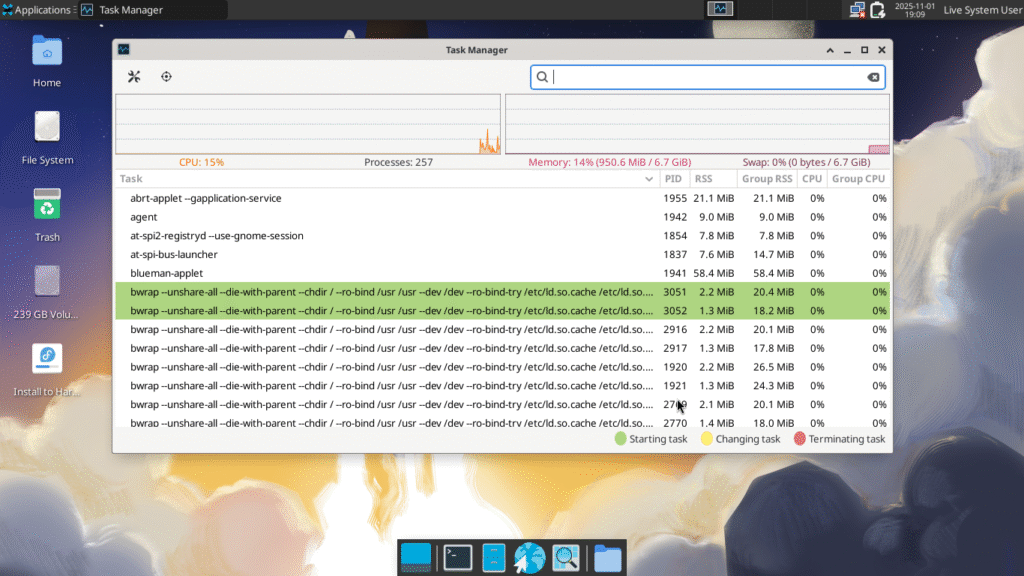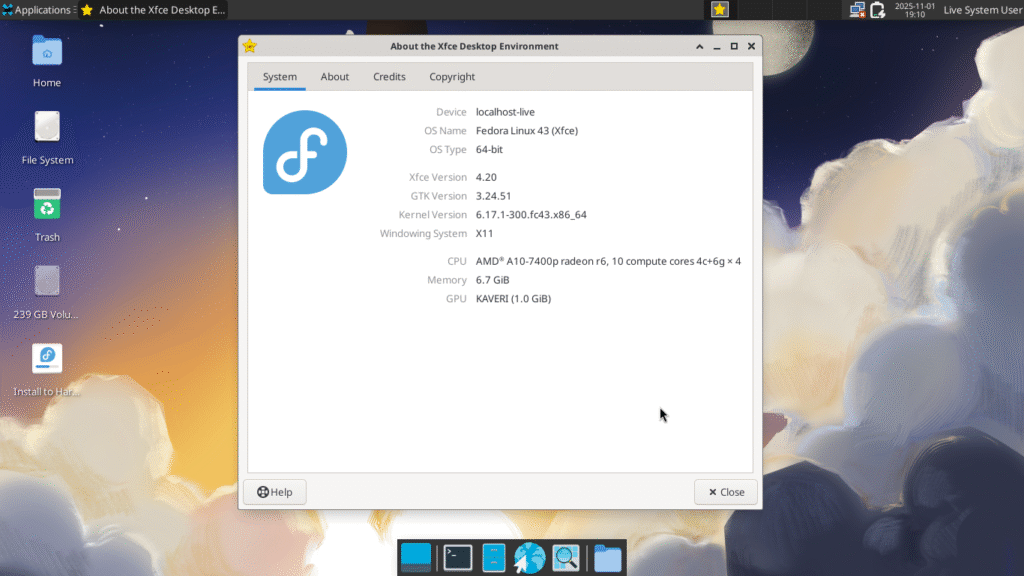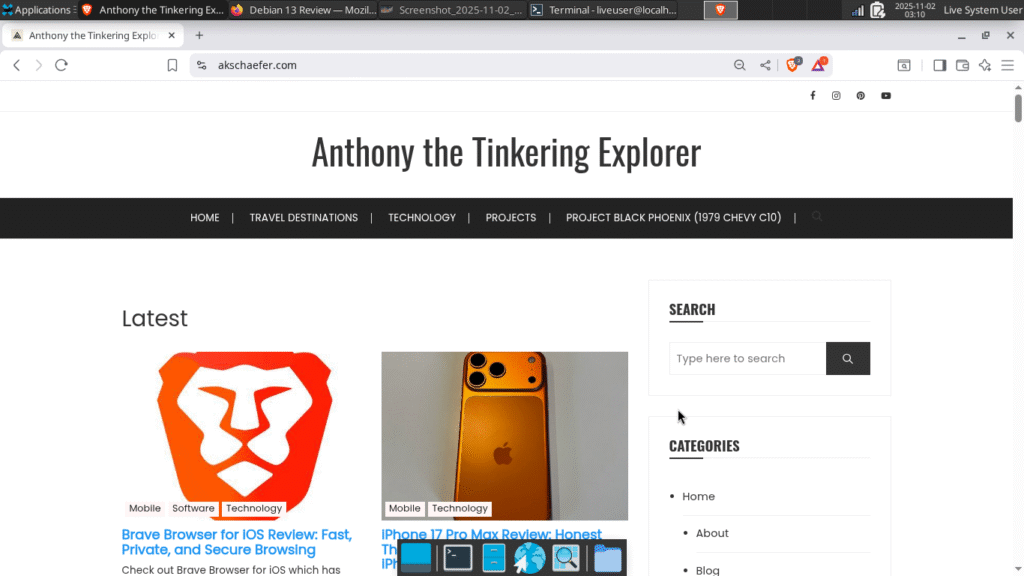Introduction
In this Fedora 43 review, I share my first impressions, what I liked, and where Fedora could do better. Fedora 43, released on October 28, 2025, brings several major updates including the Linux 6.17.1 kernel, RPM 6.0, MySQL 8.4 as the default database, and Python 3.14. GNOME now runs exclusively on Wayland, officially dropping X11 support.
Desktop Environments
- Gnome Wayland
- KDE Plasma
- Xfce (What I am using for this review)
- Cinnamon
- Mate
First Impressions and Performance
I booted Fedora 43 from a live USB, which ran a bit slow since that’s expected when running over USB rather than from a full install. Normally, I test new releases in a virtual machine since it’s easier to load the ISO and start testing, but this time I wanted to see how it performs on older hardware. I’m using an ASUS A10 laptop with 8GB of RAM, and surprisingly, Fedora with Xfce runs snappy and responsive. Even heavier desktop environments like GNOME or KDE Plasma would likely perform well on this setup.

Software
Fedora 43 ships with the Linux 6.17.1 kernel. For the desktop environment, I’m running Xfce 4.20, which continues to be lightweight and responsive.

The default browser is Firefox (non-ESR), which works great for everyday browsing and even for writing this post. Fedora also includes the standard Xfce utilities and common desktop apps like LibreOffice Writer and Calc.
I did notice a few SELinux block notifications, which is a good sign that SELinux is active and enforcing. If you are not familiar with SELinux, its basically a whitelist of all file operations that are allowed within the kernel and filesystem.
For testing, I also tried installing Brave Browser on the live distro. Following the official instructions from Brave’s website, the installation went smoothly without any issues.

Final Thoughts
Overall, Fedora 43 has proven to be a solid release that delivers the latest updates and a reliable experience. The occasional SELinux pop-up can be a bit distracting, but it’s a small trade-off for the added security it provides. Fedora and Red Hat have long had a strong community behind them, and this release continues that reputation for stability and trustworthiness.
If you’re looking for a dependable Linux system for daily use or even a server setup (using the Server edition), Fedora is a great choice. If you prefer something with a flashier interface, there are other options worth exploring even among Xfce-based distros. Check out my Best Xfce Distros post for more recommendations.